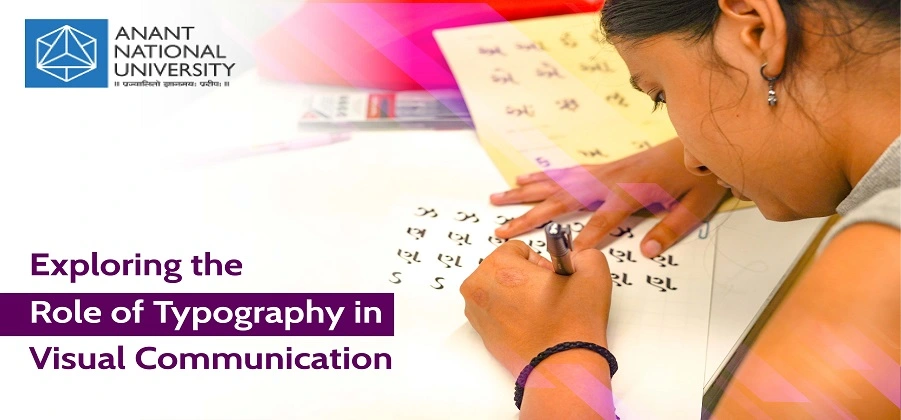

We regularly contemplate the impact of printed words, whether it is in books or on our phones, but we hardly ever think about a designer’s responsibility in emulating the tone of a word or sentence. Moreover, the practice of choosing and arranging fonts, or typography, plays a vital role in the field of visual communication. Typography makes up almost 90% of an average website but, do you know what exactly typography is and why it is so important?
Well, to provide you with better insights into this, we will delve into the importance of typography in visual communication and how it influences our perception and understanding of visual messages.
| Table of Contents 1. What is Typography? 2. What is the Role of Typography in Visual Communication? |
While discussing typography it explicitly refers to the practice of arranging letters and words in a way that improves a copy’s readability, clarity, and visual appeal. Inherently, it also comprises font style, appearance, and structure for evoking specific emotions in order to convey particular messages.
The universal components of typographic design are as follows:
The invention of movable type in the 11th century is regarded as the beginning of typography. Before the digital age, typography was a craft used primarily in books, publications, and public works.
The advent of the internet coincided and maybe even supported an explosion in typographic creativity. Typography is aesthetically diversified now more than ever before because of the wealth of font and type alternatives available to web designers. As a result of this, the 2023 typography is exclusively related to print and digital design.
Also Read: The Best Ways to Prepare for a Career in the Visual Arts
Typography is a crucial component, which can significantly influence how a website or commercial is viewed. Additionally, adroit typographic use can guide users to navigate your slides naturally.
Given below are some effective functions of typography in visual communication:
Making a visual hierarchy is one of the fundamental principles of typography. Designers can direct readers’ gaze and draw attention to crucial information by adjusting features like font size, weight, and spacing. A well-done visual hierarchy makes the most important messages visible and accessible to the audience.
The whole mood of a visual composition can be established by good and relevant typography. Serif typefaces, for example, have a more classic and refined appearance, whilst Sans-Serif fonts give off a more contemporary and streamlined vibe. Moreover, understanding the psychology behind different types of typography is crucial when designing visuals that elicit specific emotional responses. A sense of joy is also conveyed by whimsical and playful typefaces, whilst power and authority are expressed by bold and hefty fonts.
Typography’s readability and legibility have a big impact on visual communication. Additionally, a well-chosen typeface and suitable font size guarantee that the text is readily available and can be understood without effort. Balanced line height and spacing make the interaction between the readers and text more enjoyable and meaningful.
For the creation and maintenance of brand identities, typography communication is essential. As selecting distinctive typefaces can reflect the brand’s core beliefs and increase appeal to their target audience; companies frequently expend a lot of time and energy in doing so. For instance, recognisable brands like Coca-Cola and Disney have developed distinctive typefaces that have grown to represent and to be linked with their respective brands.
If you are a student and typography piques your interest, enrolling in B.Des. Communication Design Typography Design programme could be a smart move. This course teaches young designers how to use communication tactics to create an engaging relationship between viewers and graphics.
The Anant National University is offering this academic course to teach students about technical topics like typography, photography, composition, and semiotics, among other things. A few facts about the B.Des. degree in Communication Design are listed below:
| Level of Education | Undergraduate |
| Course Duration | 4 years |
| Mode | On-campus |
| Degree Type | Full-time |
| Minimum Requirement | 12th grade from any stream with at least 50% marks |
Typography in Visual Communication goes far beyond being merely an aesthetic preference. Designers can fully utilize the potential of typography to produce captivating and powerful visuals by taking into account factors like visual hierarchy, mood, readability, and cultural connotations. Above all, typography will surely continue to be a key component of effective visual communication as society adopts new technologies and design trends.
Also Read: The Future Trends in Communication Design Industry in India